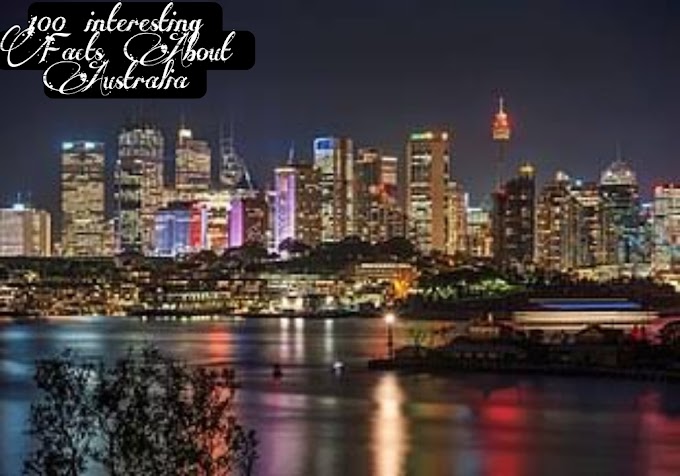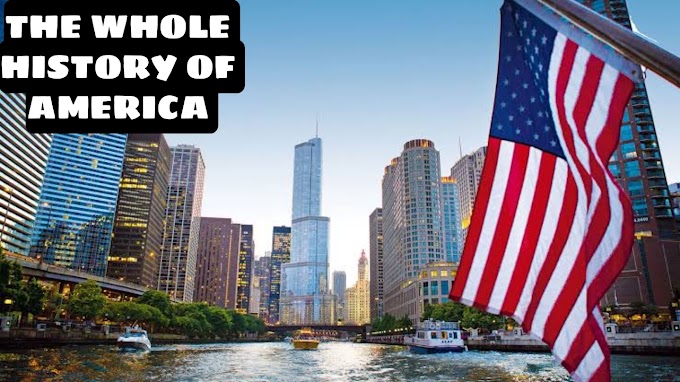Top 10 Interesting Facts About Chile
Hello Friends:
Welcome to Countries Facts,no obvious jokes about how delicious chili is here! Just another stop on our journey around the world, this time to the southwestern edge of South America, to the coastal paradise of Chile. So practice with your Trompo, brush up on your football, and watch out for the indio picaro as we divulge these top ten amazing facts about Chile.
1 Chileans of Notoriety Ever wonder who’s somewhat to blame for Jersey Shore? The city of Santiago, Chile can take a little credit for being the birth-town of Nicole ‘Snooki’ Polizzi; but we’d rather not get caught up in the blame game and instead focus on incredibly notable people like first Chilean Saint Teresa of the Andes or Google’s Vice President of Design, Matias Duarte. Other names that may ring a bell include painter Miguel Venegas; actors Pedro Pascal, Horatio Sanz, and Cote de Pablo; Slayer leader singer and bassist Tom Araya; and for you YouTube fans, be sure to check out the likes of HolaSoyGerman, JuegaGerman, DogmasFour and Lele.
2 Cuisine of Chile In Chile, rather than hear people ask for a Jack and Coke, you’ll likely find locals asking for a Pisco and cola or even the native version of a Pisco sour, two beverages that feature Chile’s national drink, the clear, brandy-like Pisco. To pair with your beverage, there’s always curanto, a method of cooking similar to an imu oven adopted from early Chilean natives. A selection of meats, shellfish, and vegetables are layered on heated stones in a near 5’ (1.5 m) hole and covered with wet sacks, dirt, and grass to simulate a pressure cooker.
3 Chilean Wildlife or Festivals Though they’re often depicted as cold-weather animals, four species of penguin are known to call Chile home. In fact, outside of Punta Arenas, you’ll find the Seno Otway Penguin Colony, which, outside of being a tourist attraction, is also a habitat for the Otway Sound Penguin. Other species found in Chile include the Southern Rockhopper and Humboldt penguin. Other endemic species to the South American country include the pygmy deer, or shy pudu, llama and alpaca, and vicuna, a camelid known for its sought-after fur.
4 The Sights of Chile Often considered the “cleanest� place on the planet, the South American region known as Patagonia is a wildlife paradise that stretches across Argentina and Chile, brimming with stunning visuals of crystalline glaciers, rolling green plains, and sparkling blue lakes. Within Patagonia, you’ll find Torres del Paine National Park, home to Cordillera del Paine, or the small grouping of towering mountains. Off the coast of South American lies the well-known Chilean island, Easter Island, which houses Rapa Nui National Park, a UNESCO World Heritage Site known for 887 strange statues known as moai.
5 The Moai of Easter Island Speaking of the moai of Easter Island, the incredible statues are said to date back to sometime between the 15th and early 17th centuries, which dates around when Spanish conquistadors started to arrive at mainland South American to colonize what’s now present-day Chile. The 86-ton, 33’ (10 m)-tall statues were carved from the Rano Raraku volcano and were created to pay tribute to the current and prior chieftains of the island. Though many of the statues were overtaken by Earth, full-bodied examples of these towering figures can still be seen having survived the test of time at Ahu Tongariki.
6 Chile and Sports Even if you love football, chances are you don’t love it nearly as much as a Chilean does! Formed in 1895, the Federacion de Futbol de Chile, or the Football Federation of Chile, is the second oldest South American federation and Chile itself is one of four founding members of the South American Football Confederation. The Chilean team has been around since the beginning, having been one of 13 teams to partake in the very first FIFA World Cup in 1930. Since then, the nation has enjoyed a series of wins, specifically at the 2000 Sydney Olympics, where the men’s soccer team took home the bronze, and in the 2015 and 2016 Copa America, where their team took first place.
7 Chilean World Records And if you need even more proof of Chile’s love for football, consider that in 2016, 2,357 amateur and professional football players gathered for a five-day, 120-hour football match. The stunt earned the Guinness World Record for most players in a match but didn’t beat Scotland’s current record for longest game of 105-hours due to lack of verification. Other records earned for Chile include the “tree with most different fruit,� earned by Luis Carrasco who grafted five different fruit trees into one; the “largest virus,� awarded for the megavirus chilensis; and the “largest single copy of newspaper,� which measured at about 11' 9" x 8’ 4� (3.6 x 2.56 m).
8 What’s in a Name? Was the food named after the country? Or the country after the food? Neither is true, actually, as the pepper derived from their Nahuatl name, spelled with two “L’s.� The etymology of the nation’s moniker, on the other hand, is a little more difficult to pinpoint. Some researchers theorize it was a bastardization of Tili, the Picunche tribal chief that ruled over the region during the 15th century. Other theories claim Chile was pulled from the Native American word for “ends of the earth� or “seagulls,� the Mapuche word for “where the land ends,� or even from the Quechua words “chiri� or “tchili,� meaning cold and snow respectively.
9 The Truth is Out There It’s not often you hear a government touting the existence of UFOs, let alone come across a government-funded group devoted to the practice of extraterrestrial and UFO discovery and studies. Instead of blaming swamp gas and weather balloons, Chile’s Committee for the Studies of Anomalous Aerial Phenomena (CEFAA) will outright claim something as being an unknown phenomenon. In fact, Chilean residents experience so many UFO sightings that the town of Sam Clemente dedicated a 19-mile (30 km)-long trail through the Andes Mountains to the country’s alleged ET epidemic.
10 The Chilean Independence On September 18th, 1810, after Napoleon’s intervention in Spain initiated steps towards full autonomy in Chile, high-powered representatives gathered for a town meeting to alter the current administration and elect a council of native leaders. Despite a period of peace and progress under the new rule, Spain sought to step in to regain control, which it achieved at the Battle of Rancagua in 1814. Three years later, Chilean patriots fed up with Spanish rule marched against the militaristic supremacy, once again earning their emancipation from Spain. On February 12th, 1818, Chile declared independence from Spain, though it wasn’t recognized until April 25th, 1844.
I hope you guys this Article will be informative for you we will see you soon in the next Article GodBye.
















